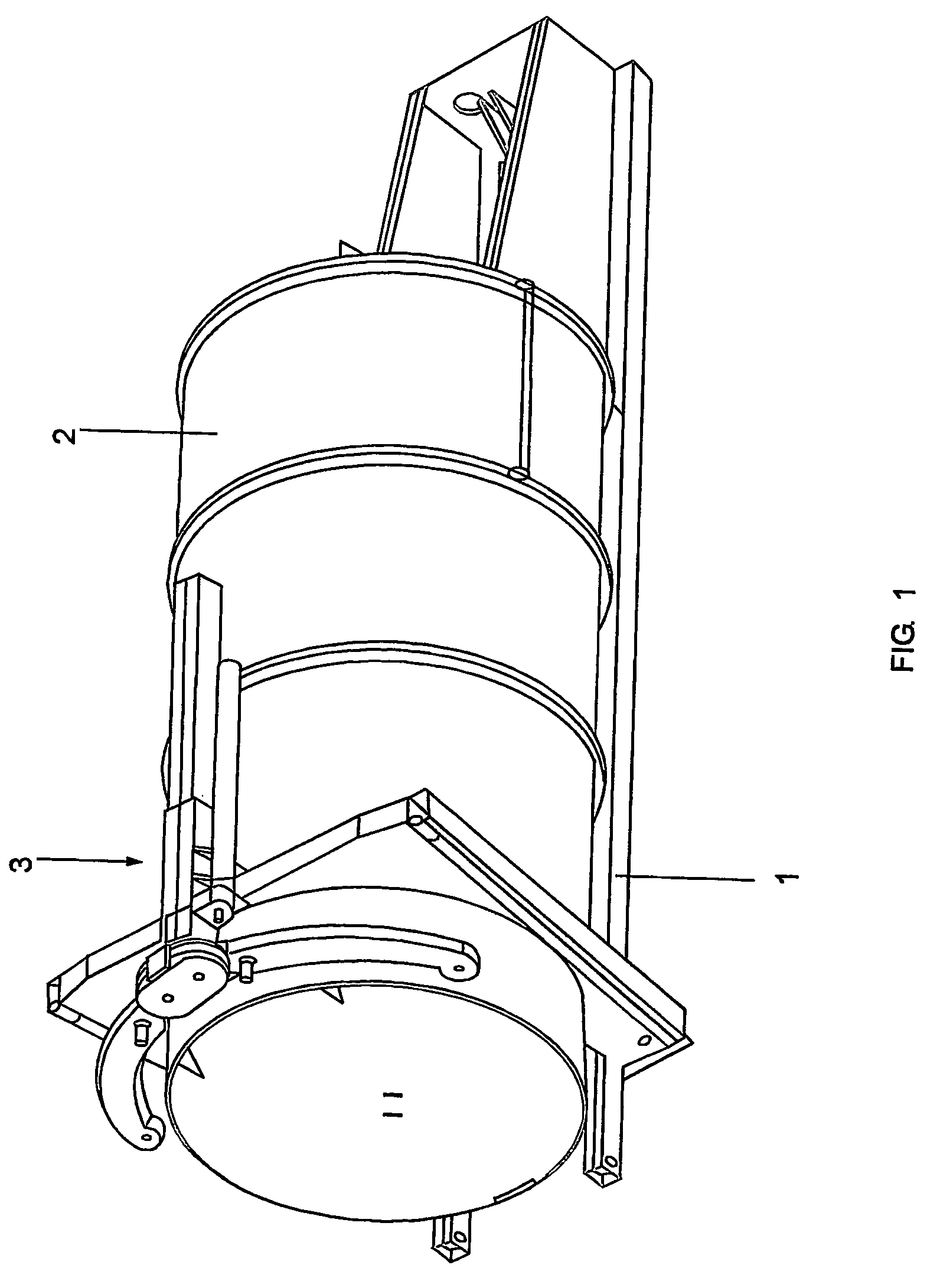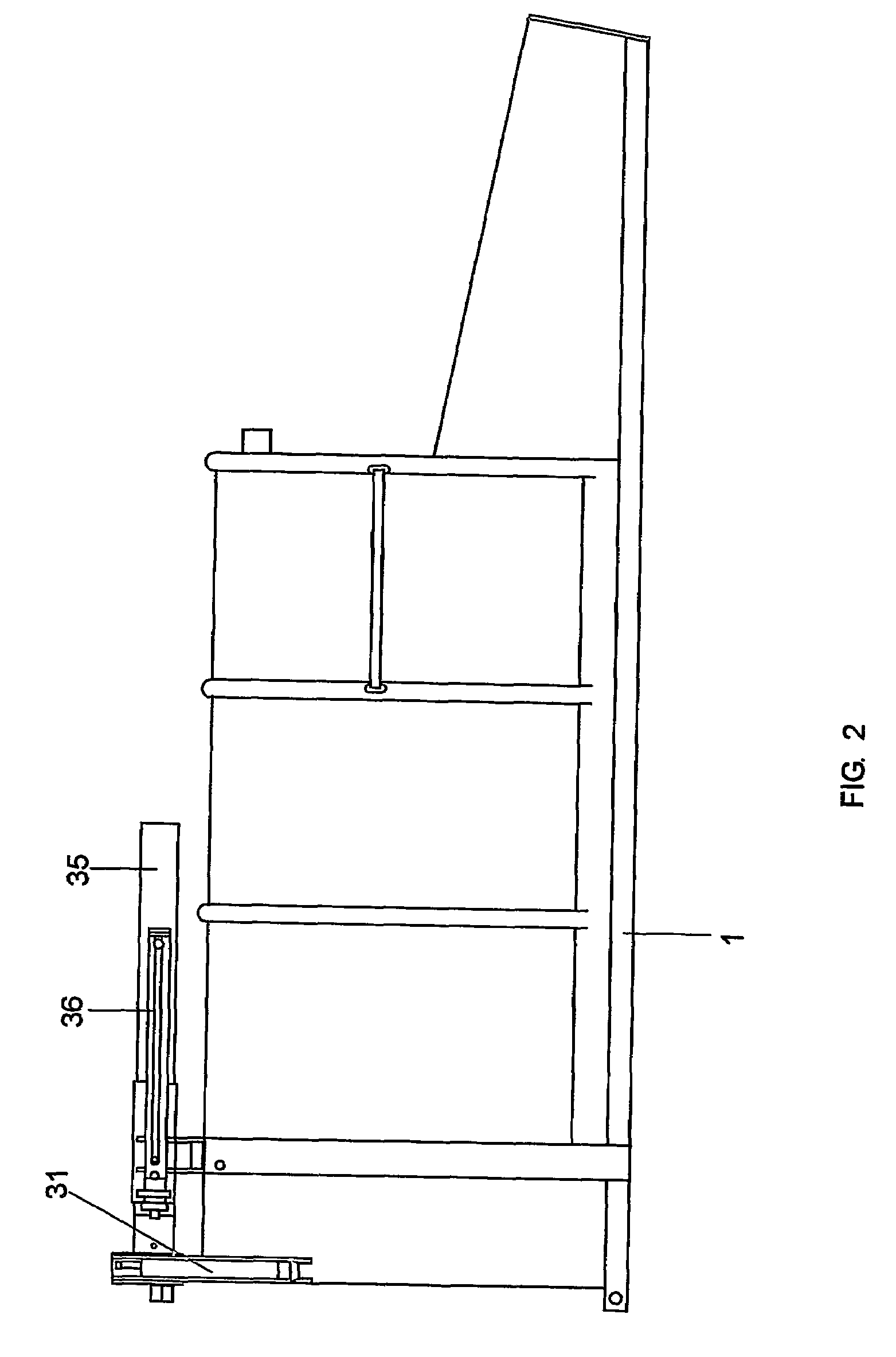Collecting, compacting and bagging device for waste in general
a technology of waste and compacting bag, which is applied in the field of collecting, compacting and bagging devices for waste in general, can solve the problems of increasing the environmental impact of open-air collection and disposal of waste in general, increasing fuel consumption, and not meeting the hygiene and safety requirements of both the population and the operators of this system. , to achieve the effect of minimizing the harmful effects on natur
- Summary
- Abstract
- Description
- Claims
- Application Information
AI Technical Summary
Benefits of technology
Problems solved by technology
Method used
Image
Examples
Embodiment Construction
[0034]FIGS. 1 to 3 show the equipment invented with the chassis (1), supporting a closed body (2), preferably a cylindrical chamber that is opened at both ends and has a back cover to close the body and a moveable front compression plate (not shown in these figures). A clasping device of the accordion-like tube encircles the back part of the body (1). A bag sealing mechanism (3), operated by hydraulic cylinders (35 and 36) and pliers (31) presses the loaded bag and squeezes it so as to place a sealing band manually.
[0035]FIGS. 4 to 6 show the back cover (4) whose lower part pivots on the chassis (1) and transforms into a discharge chute for the collected, compacted, and bagged material. The opening and closing of the cover (4) is operated by a hydraulic cylinder (41) which is placed at the bottom of the chassis (1) and pulls cables (42) which lower or the aforesaid cover (4) thanks to grooved pulleys (43).
[0036]FIGS. 7 to 9 detail the compression plate (5) that is operated through a...
PUM
 Login to View More
Login to View More Abstract
Description
Claims
Application Information
 Login to View More
Login to View More - R&D
- Intellectual Property
- Life Sciences
- Materials
- Tech Scout
- Unparalleled Data Quality
- Higher Quality Content
- 60% Fewer Hallucinations
Browse by: Latest US Patents, China's latest patents, Technical Efficacy Thesaurus, Application Domain, Technology Topic, Popular Technical Reports.
© 2025 PatSnap. All rights reserved.Legal|Privacy policy|Modern Slavery Act Transparency Statement|Sitemap|About US| Contact US: help@patsnap.com



